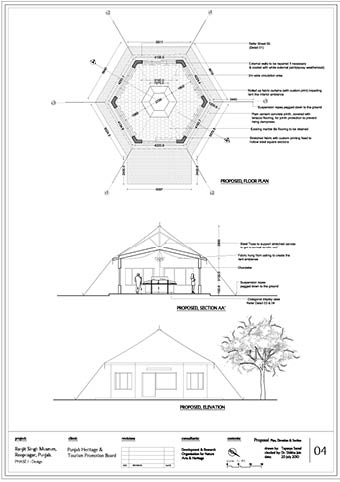
Project Scope: Concept Design.
Client: Directorate of Cultural Affairs, Archaeology & Museums, Punjab
Project Brief: The town of Rupnagar formerly known as Ropar, a part of Rupnagar District is situated on the bank of river Satluj in Punjab state, with Sirhind canal passing through the heart of the city. Rupnagar, believed to have been founded by a Raja called Rokeshar who ruled in the 11th century and named Rupnagar after his son Rup Sen is of conrable antiquity. Excavations at a mound, known as Nalagarh Tibbi near the Government College revealed recently its association with Indus Valley Civilization, placing it as a well developed town in the time of Harrappa – Mohanjodharo along the Sutlej River. Among articles found during excavation, there exist objects attributed to Chandra Gupta, Kushan, Hoon and Mughal period, taking the lineage of this historic city back to 4000 years. Apart from this ancient history, the town played an important role in Modern history. This is the site that played host to the famous Ropar Treaty between Maharaja Ranjit Singh and Lord William Bentick signed by them on 26th October 1831 under a peepal tree on the river bank, during which various boundary issues were resolved.
Project Cost: 50 Lakhs
Project duration: June 2009
Project Status: Concept submitted